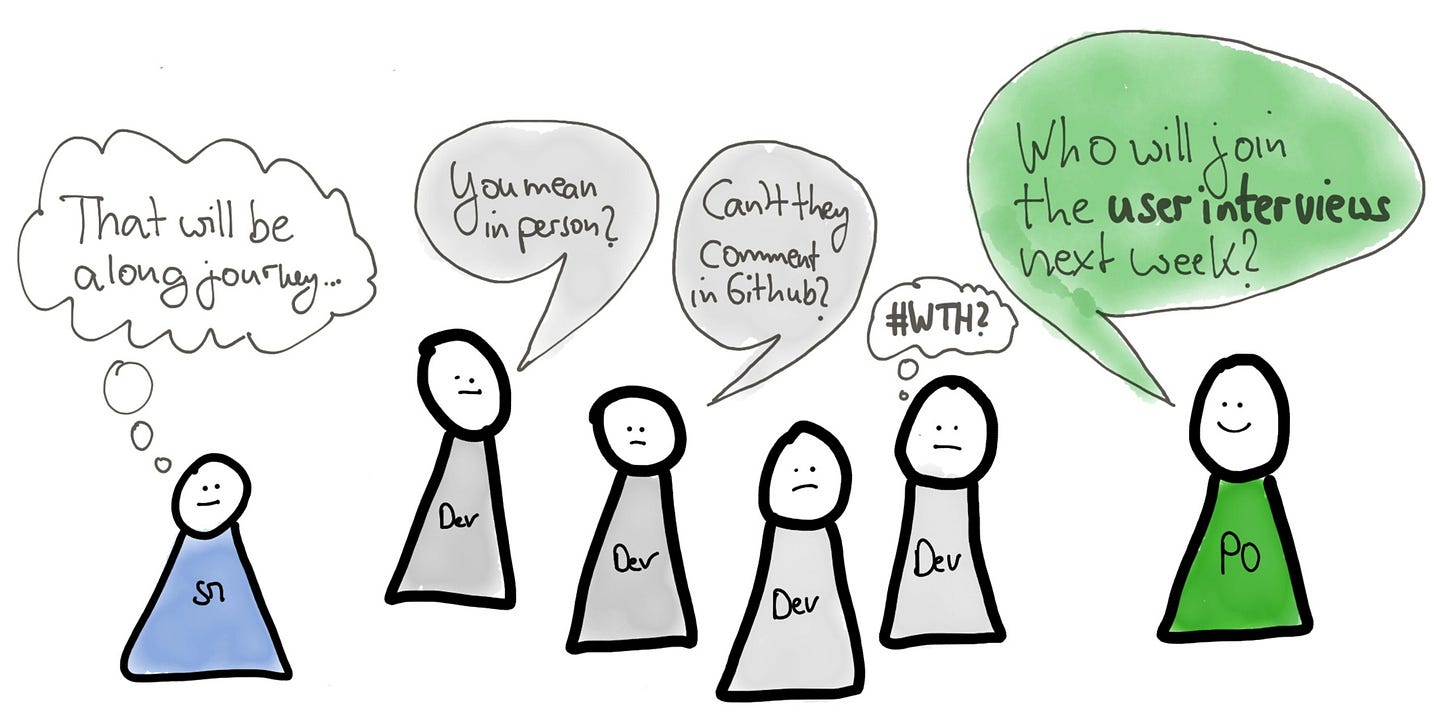Developer Anti-Patterns — An Introduction
An Excerpt from the Scrum Anti-Patterns Guide (3)
Hello everyone!
Welcome to the third excursion into Scrum anti-patterns.
Today, we will briefly consider the Developer, from corner cutting to meet deadlines to entertaining side gigs to delivering undone work. Learn more about what to look out for if you want to support your teammates who build the Increment.
The Role of the Developers in Scrum
The term “Developer” does not limit the role to technical people, such as software engineers. Instead, in the spirit of the Scrum Guide, the role of “Developer” is much more inclusive: everyone who contributes to the creation of the Increment is a Developer, lawyers, and marketers included1.
Developers are accountable for the following:
Creating a Sprint Goal collectively with the Product Owner and Scrum Master2,
Committing to the Sprint Goal,
Picking all Product Backlog items they deem necessary to accomplish the Sprint Goal, transferring them to the Sprint Backlog,
Creating a plan for the Sprint,
Adapting their plan towards achieving the Sprint Goal during the Daily Scrum,
Adhering to a Definition of Done to ensure quality, and
Holding each other accountable as professionals.
They enjoy complete autonomy in planning and executing their work to transform Product Backlog items into Increments of value. This approach aligns with the Agile Manifesto’s emphasis on self-organizing teams and valuing individuals and interactions over processes and tools.
How Developer Anti-Patterns Manifest Themselves
Most Developer anti-patterns result from one of the following issues:
A lack of focus or professionalism,
Procrastination,
Cutting corners,
A failure to align the Developers and the Product Owner on what to build next,
Ignorance toward core Scrum principles, particularly regarding the Daily Scrum and the Sprint Review,
Lackluster support of the Product Owner regarding product discovery and Product Backlog management, and
Systemic issues; for example, a lack of slack time.
Food for Thought
Is Scrum too egalitarian? There are no hierarchies, sub-roles, or silos within a Scrum Team but a collective responsibility on the Developers’ side. How can we then align the apparent need for distinguishing accomplishment levels with Scrum’s egalitarian nature? The same applies to topics like software architecture and team topology.
Conclusion
Given their essential role in making Scrum successful, it is no surprise that there are plenty of Developer anti-patterns to observe. The good news is that many of those are entirely under the control of the Scrum Team. All it takes to tackle these anti-patterns for the team is starting to inspect and adapt, addressing one improvement area at a time.
If you have any questions, please let me know.
Best,
Stefan
Ken Schwaber & Jeff Sutherland: The Scrum Guide — The Definitive Guide to Scrum: The Rules of the Game, 2020.
Ken Schwaber & Jeff Sutherland: The Scrum Guide — The Definitive Guide to Scrum: The Rules of the Game, 2020.




